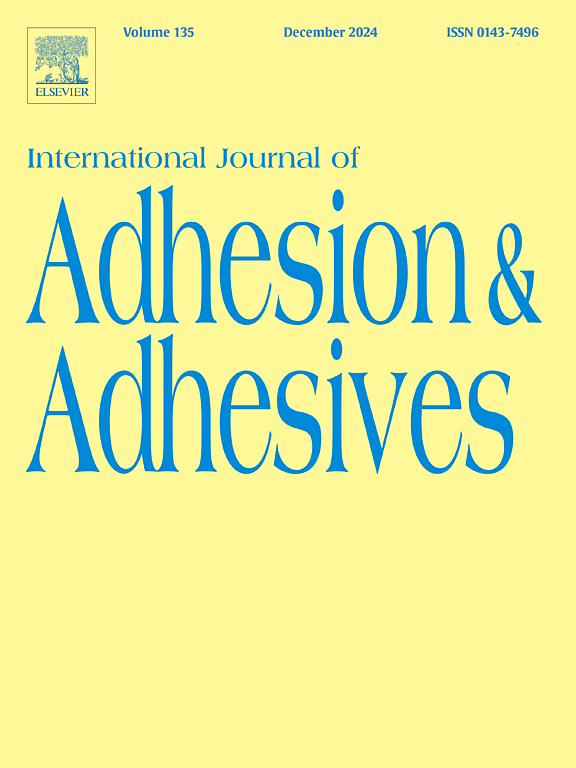Study of electrical conductivity in epoxy-based adhesives and polyurethane adhesives through the addition of graphene nanoplatelets before and after thermal aging
IF 3.2
3区 材料科学
Q2 ENGINEERING, CHEMICAL
International Journal of Adhesion and Adhesives
Pub Date : 2025-02-08
DOI:10.1016/j.ijadhadh.2025.103973
引用次数: 0
Abstract
This study investigates the electrical conductivity of two commercial adhesives—epoxy-based and polyurethane-based—reinforced with varying concentrations of graphene nanoplatelets (GNPs) (0–30 % by volume) and evaluates the influence of thermal aging on this property. Using a custom-designed two-prong uniaxial measurement method that accounts for specimen volume and current pathways, the results reveal a consistent increase in conductivity with higher GNP concentrations. Across all concentrations, the polyurethane adhesive exhibited superior conductivity compared to the epoxy-based adhesive. Notably, the addition of 30 % GNPs doubled the conductivity in both adhesives relative to their unreinforced counterparts. Thermal aging, performed at 70 °C for 16 h, further enhanced conductivity for both adhesives, particularly at lower GNP concentrations for epoxy and across nearly all concentrations for polyurethane, with increases of up to 200 %. These improvements are attributed to more complete polymerization during aging, optimizing the conductive pathways. The findings highlight the potential of GNP-reinforced adhesives for applications requiring enhanced electrical properties.
通过在热老化前后添加石墨烯纳米片研究环氧基胶粘剂和聚氨酯胶粘剂的电导率
本研究研究了两种商用胶粘剂——环氧基和聚氨酯基增强的石墨烯纳米片(GNPs)(体积0 - 30%)的电导率,并评估了热老化对其性能的影响。使用定制设计的双尖头单轴测量方法,考虑试样体积和电流路径,结果显示随着GNP浓度的增加,电导率持续增加。在所有浓度下,与环氧基胶粘剂相比,聚氨酯胶粘剂表现出优越的导电性。值得注意的是,与未增强的粘合剂相比,添加30% GNPs的粘合剂的导电性增加了一倍。在70°C下进行16小时的热老化,进一步增强了两种粘合剂的导电性,特别是在较低GNP浓度下的环氧树脂和几乎所有浓度下的聚氨酯,其导电性提高高达200%。这些改进归功于在老化过程中更完全的聚合,优化了导电途径。研究结果强调了gnp增强胶粘剂在需要增强电性能的应用中的潜力。
本文章由计算机程序翻译,如有差异,请以英文原文为准。
求助全文
约1分钟内获得全文
求助全文
来源期刊

International Journal of Adhesion and Adhesives
工程技术-材料科学:综合
CiteScore
6.90
自引率
8.80%
发文量
200
审稿时长
8.3 months
期刊介绍:
The International Journal of Adhesion and Adhesives draws together the many aspects of the science and technology of adhesive materials, from fundamental research and development work to industrial applications. Subject areas covered include: interfacial interactions, surface chemistry, methods of testing, accumulation of test data on physical and mechanical properties, environmental effects, new adhesive materials, sealants, design of bonded joints, and manufacturing technology.
 求助内容:
求助内容: 应助结果提醒方式:
应助结果提醒方式:


